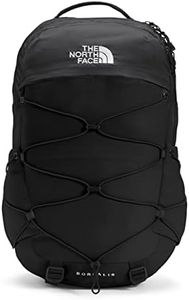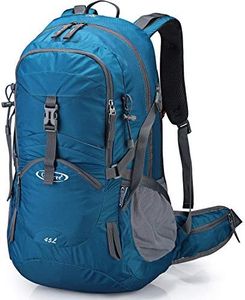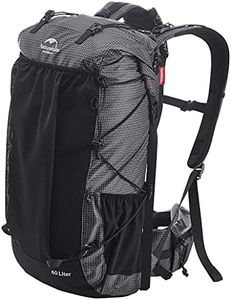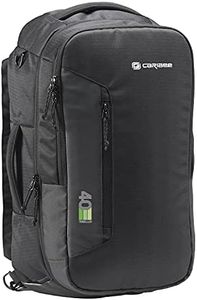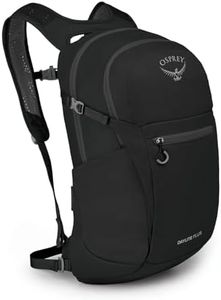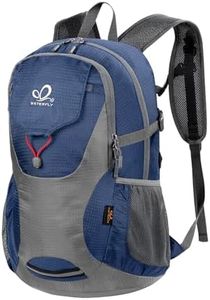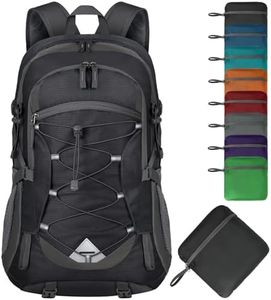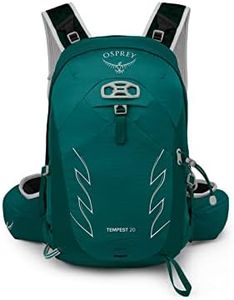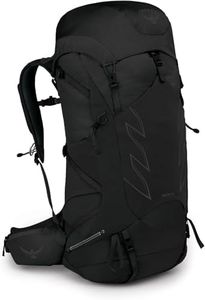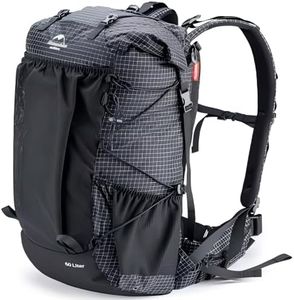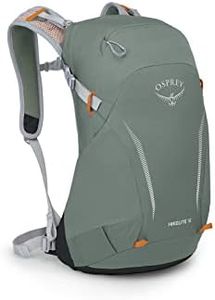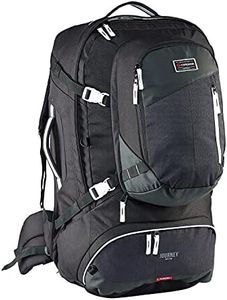We Use CookiesWe use cookies to enhance the security, performance,
functionality and for analytical and promotional activities. By continuing to browse this site you
are agreeing to our privacy policy
10 Best Hiking Backpacks
From leading brands and best sellers available on the web.Buying Guide for the Best Hiking Backpacks
Choosing a hiking backpack is all about matching the pack to your needs, activities, and comfort. The right backpack can make your hikes much more enjoyable, helping you carry all your essentials without strain. When picking a backpack, pay special attention to the environment you'll be hiking in, how long your trips last, and your own physical comfort. Prioritizing fit, capacity, and organization will ensure you get a backpack that supports you through many adventures.Capacity (Liters)Capacity refers to how much the backpack can hold, measured in liters. This is crucial because you want a pack that fits everything you need without being too bulky or too small. Small packs, typically 15-30 liters, are great for short day hikes with just water, snacks, and a rain jacket. Packs in the 30-50 liter range are suitable for day hikes where you carry extra gear or for light overnight trips. Larger packs, above 50 liters, are best for multi-day trips where you must carry more gear, food, and clothing. Choose capacity based on how long you're out and how much you need to bring.
Fit and Suspension SystemThe fit and suspension system of a backpack means how it matches your body and distributes weight. This is essential for comfort and for preventing injuries or fatigue. Packs come with adjustable straps and different torso lengths to fit varying body shapes. Some have padded hip belts and shoulder straps. Small, lightweight packs may have minimal padding, while larger packs offer more support. Try on the backpack with weight in it, adjust the straps, and make sure the hip belt fits your hips, not your waist. A properly fitting backpack should feel stable and comfortable, transferring weight to your hips rather than straining your shoulders.
Weight of the BackpackThe base weight of the backpack itself matters, especially if you're conscious about carrying as little as possible. Lightweight backpacks, made with thinner materials and fewer features, help you move easily but may have less comfort or durability. Heavier backpacks may offer extra support, pockets, and tougher construction. Consider how much comfort you're willing to trade for reduced weight. If you tend to pack light and value agility, go for a lighter bag. If you carry more gear or want extra features and comfort, a slightly heavier backpack may suit you.
Access and OrganizationThis refers to how you access your gear and how items are arranged inside the pack. Some packs load from the top, which is simple but can make items at the bottom harder to reach. Others have zippers that open the bag wide or side access for getting to gear easily. Look for the number and type of pockets, compartments, hydration sleeve (for water bladders), and attachment points for things like trekking poles. Think about how you typically like to pack and access your things. If you need quick access to gear or value staying organized, look for backpacks with more compartments and easy access features.
VentilationVentilation is about how well the backpack allows air flow across your back, helping keep you cool and dry. Some packs have a mesh panel and ventilation channels that sit off your back, while simpler designs sit flush against your back. For hot climates or if you sweat easily, a pack with good ventilation is best. In colder or more moderate climates, ventilation might be less important, and a closer-fitting pack will keep you warmer.
Water Resistance and MaterialWater resistance indicates if the backpack can protect your belongings from rain or splashes. Most hiking backpacks are made from nylon or polyester and may have a durable water repellent coating. Some have included rain covers for extra protection. If you often hike in wet conditions, consider a pack with good water resistance or one that comes with a rain cover. Also, check the thickness and toughness of the material to ensure it matches your environment, especially if you hike off-trail or in rocky areas.

